How To Simplify Fiddle Sheet Music
I want to help you learn note-reading so you can more easily play tunes you love.
A lot of sheet music includes embellishment and slight melodic variations which make the basic melody more complex. In this lesson, I’ll show you how to remove complexity to make reading more easy.
How do you simplify sheet music?
First, strip away all embellishments
If you’ve looked at sheet music, you might have noticed that different versions often include embellishment. When first learning a tune, I suggest you ignore all grace notes, double stops, slurs, volume markings, accents, slides, etc. Let’s use Swallowtail Jig Variation as an example.
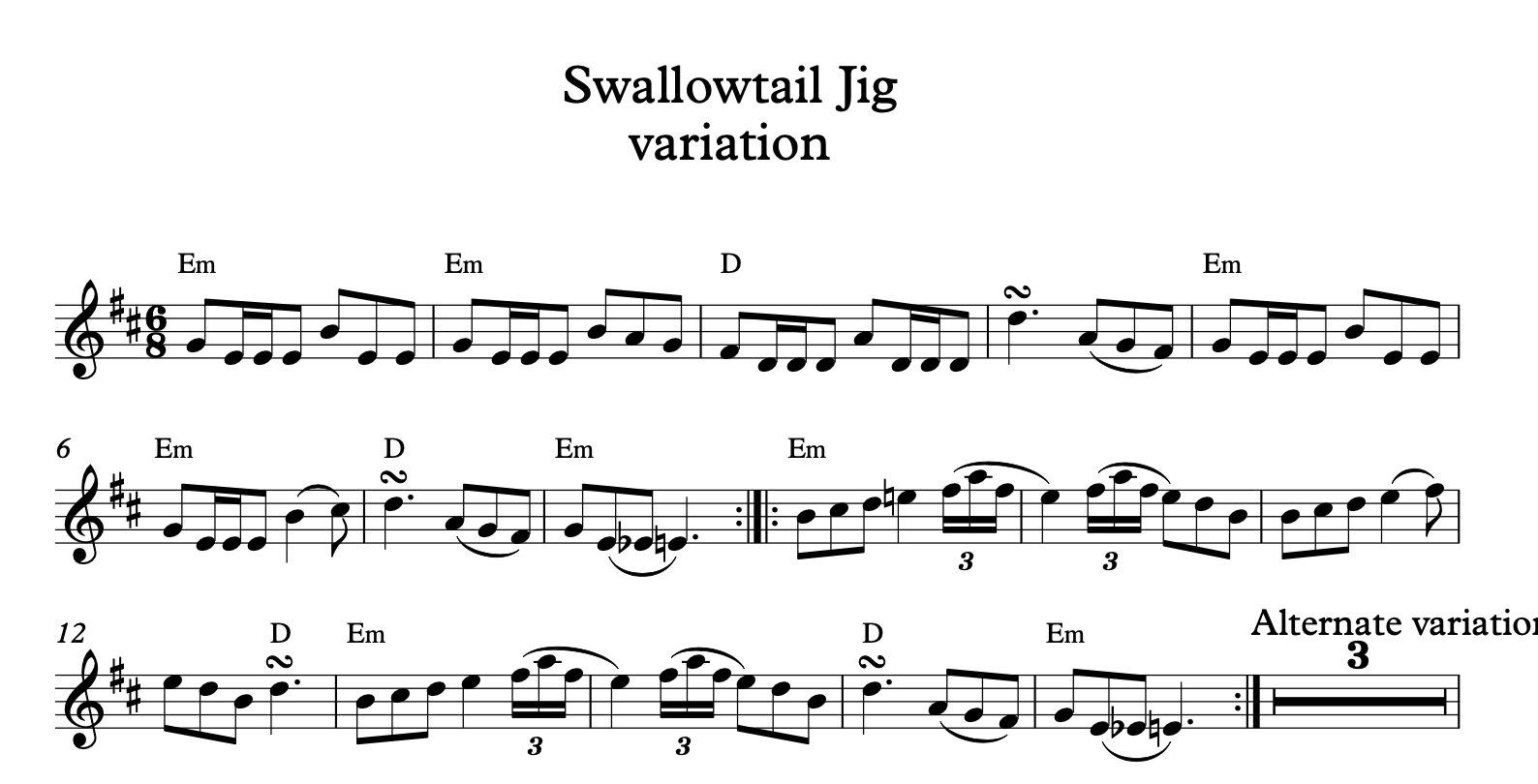
I crossed out sixteenth notes, rolls, slurs and slides.
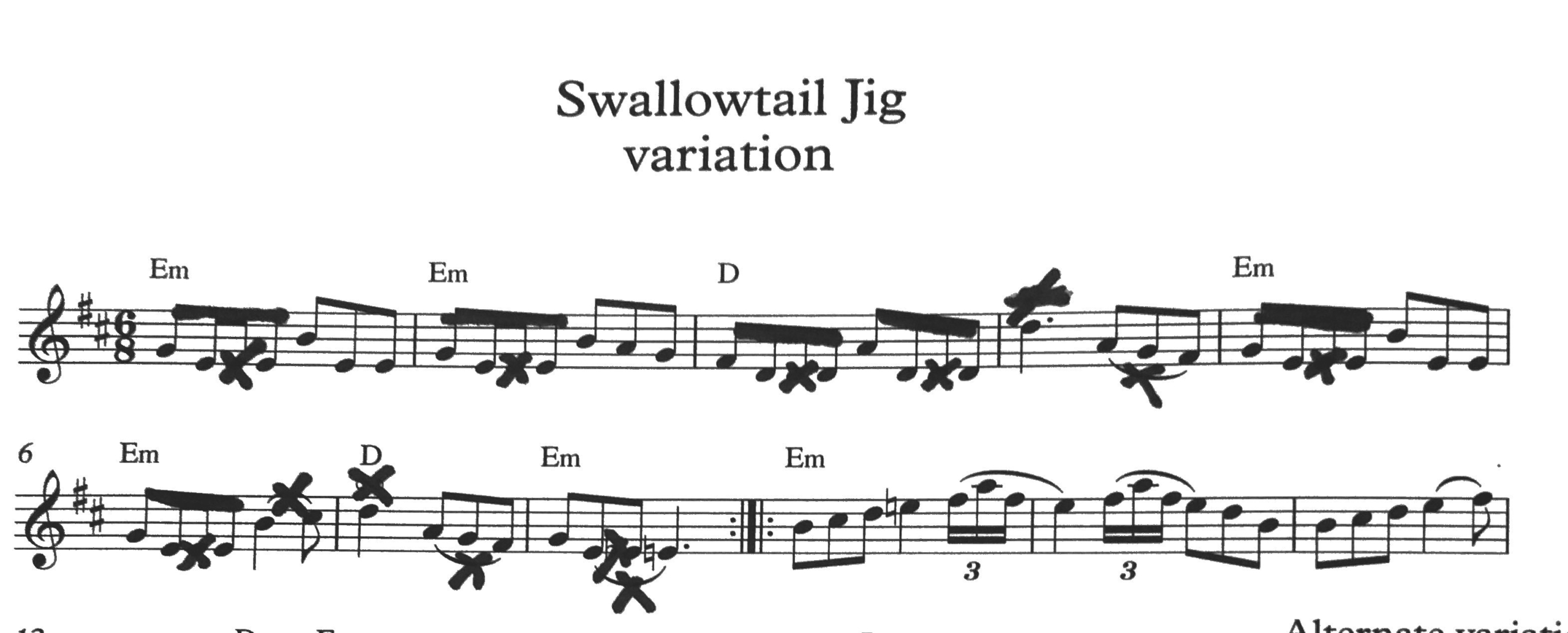
Which leaves me with a more basic version of the tune.
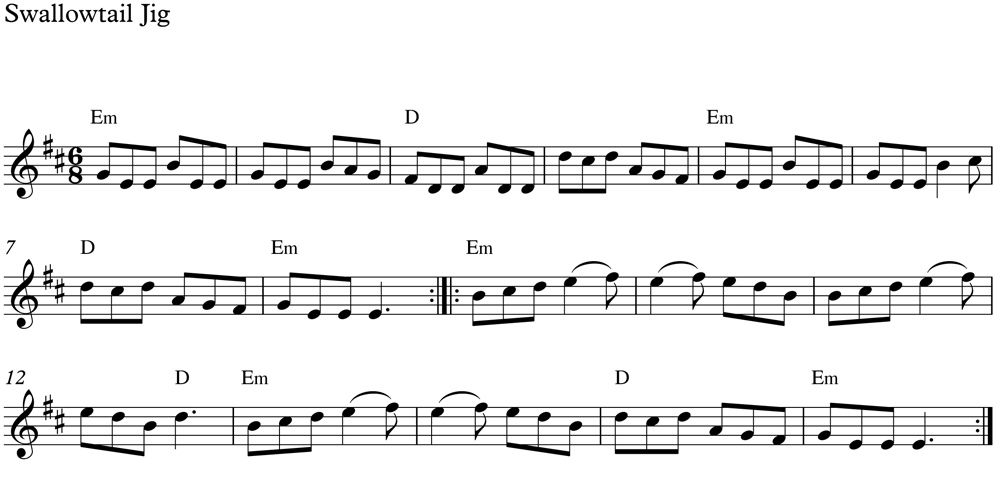
Next notice if there are repeating parts
There are three super-common patterns to watch out for.
- 1st quarter = 3rd quarter (A and B parts)
- A part 4th quarter = B part 4th quarter
- A part second half = B part second half
Here’s Kerry Polka. I’ve circled the first and third quarters.
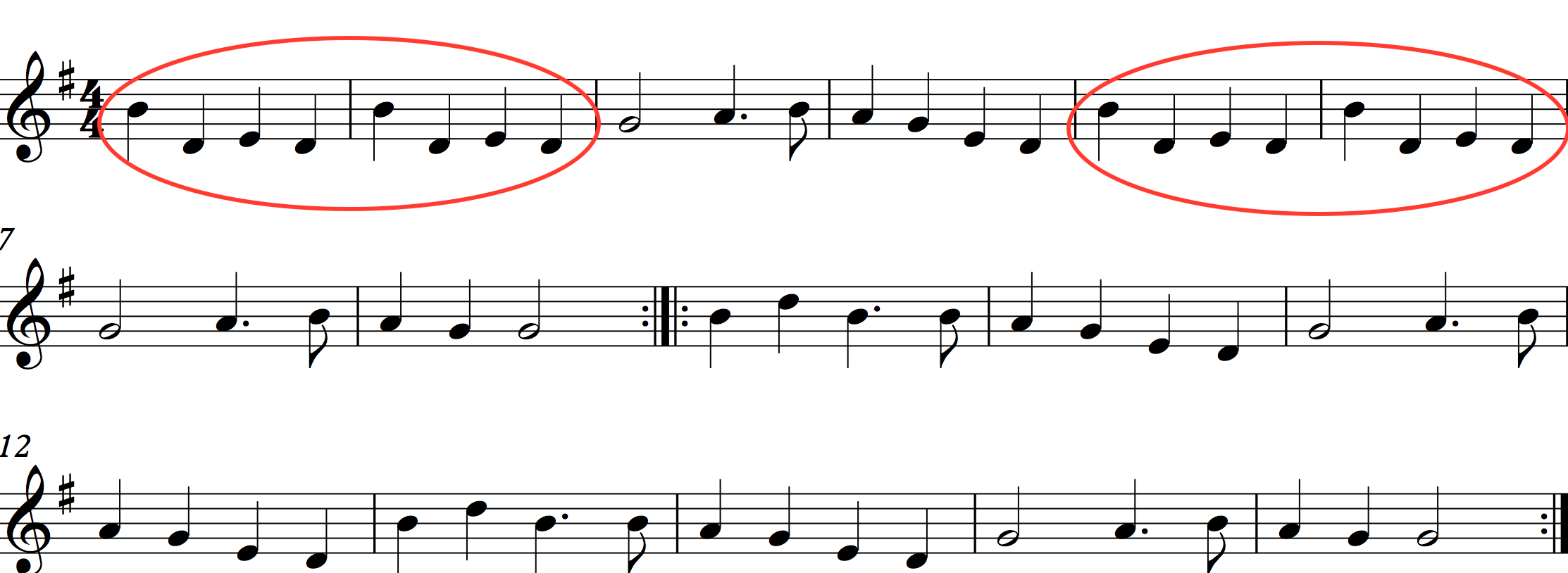
Make a mental note of repetition you find. Mark up the sheet music with a pencil, maybe even a colored pencil for identical parts. Or take note of repetition in your practice journal.
I talk more about this here: Finding Patterns In Sheet Music.
Look for hidden repetition
A lot of fiddle tunes have what I call “hidden repetition”. There are parts that are very similar. These are often interchangeable. Take a look at the same parts to find hidden repetition:
- 1st quarter = 3rd quarter (A and B parts)
- A part 4th quarter = B part 4th quarter
- A part second half = B part second half
For example, compare the first and third quarters of a tune. Are they similar?
Let’s look at Chilly Winds as an example. If you look at the bars 1-2 and the bars 9-10, you can see that there is only one note difference.
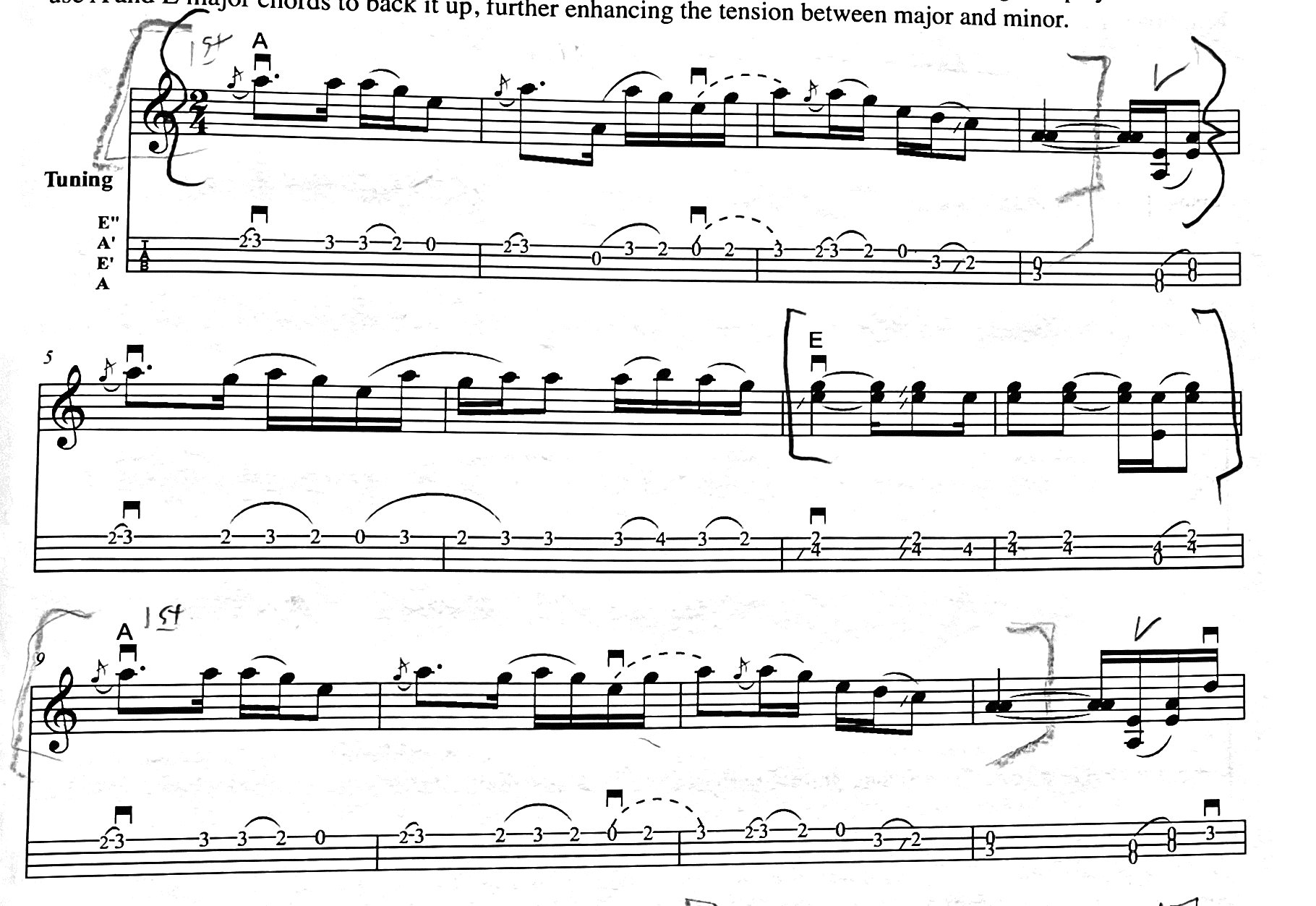
When I learned it, I just substituted bars 1-2 for bars 9-10, and it totally works. This made it much easier for me to learn and memorize the tune.
This kind of substitution won’t always work. You have to listen for musical flow. If you’re unsure, just listen to recordings of the tune.
Simplification Leads to Creativity
It may seem like this makes the music more boring. But I think this subtraction process actually nurtures your creativity. And remember: You probably won’t play this simplified version forever. The way you play the tune will evolve over time.
Once you master the tune, you can gradually add back the complexity you removed before learning it. This way you can be more intentional about how you add variation. You can even add variations you pick up in other versions.
Learning tunes in this way can also make you a more flexible player in group settings. You won’t be as attached to a particular version. You’ll be able to better adapt to what others are doing.
Practice tracking
Return to Top of Note-Reading For Fiddlers >>
Leave a Reply
You must be logged in to post a comment.

This was an excellent lesson and makes total sense to me. If you can see a way to simplify the piece until you get the hang of it, it is much better than abandoning it because it seems too overwhelming.
I agree that knowing the core of the song can be helpful when playing with others. As long as you know the core tune it is still compatible with someone playing the fancy embellishments.
I really like the tune “Chilly Winds”. However, I am having trouble learning it from the sheet music provided. Might we do a lesson going into more detail on this one or perhaps a practice journey? I found a simpler version in D minor that I like, but would love to learn your version
Having taught myself knitting, crochet & tatting, I learned that the more you look for repeats of stitch, note or rhythm, the faster it becomes a subconscious habit. They just start to jump out.
I have a question about this. In needlework, you read a graph and it feels
very much like reading music. I have a habit of, while browsing graphs, seeing a new combination of stitches and even if I have no intention of making what the graph is, I will pick out these new combinations and start doodling with my needles. Most of them are 17th & 18th century and relevant to not much else I’ll use and so I’m just playing with it. I’ll call it what it is. I’m just fartin’ around with it.
Is this a habit I should break and concentrate on learning one thing at a time? Is it ok to have some bizarrely difficult couple measures that, if I ever played at all, would be years down the line? You will probably be glad when my two weeks is up and hope I forget about this. I just find that for my particular mind, it dims frustration by reminding me “Amy, that is crazy difficult. But this is something you can do if you want to.”
Roll your eyes if you must, but I have a harder time unlearning than learning, so breaking bad habits kills me.
Thank you so, so much,
Amy
Useful lesson, Jason. I used to think that I would never be able to read music, but I’m working on it now with your guidance. Little steps!
I’ve been making index cards for the Irish tunes,as you suggested in a previous lesson. Just being able to work out the notes in the first couple of bars of a tune is enough to recognise the tune. That is so useful for when I just want to pick up the fiddle and play something.